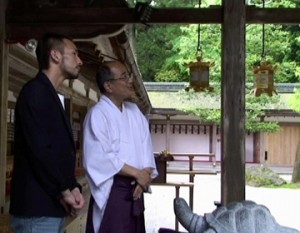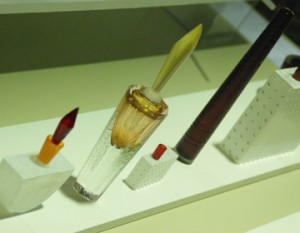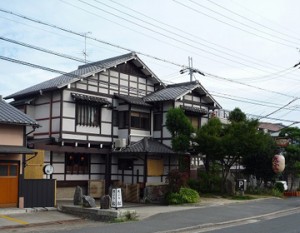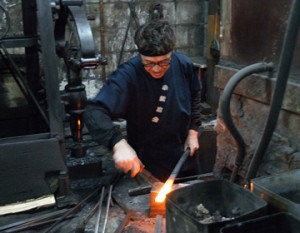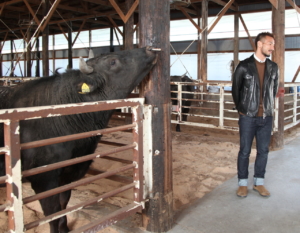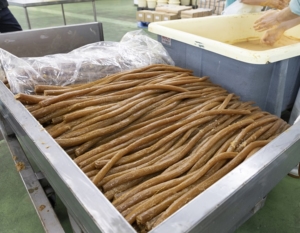Oita Prefecture, rich in nature, is blessed with abundant agricultural products such as Seki mackerel and Seki sardines, which benefit from the bounty of the sea, and shiitake mushrooms, a treasure of the mountains. Among these, the existence of “nori” (seaweed), which is now preserved by only a few remaining fishermen, is little known. “Tsuru Kame Foods,” which continues to produce this rare nori using traditional methods in the northern part of Oita Prefecture, where it can only be harvested there, shares their desire to pass on this tradition to future generations.
What is seaweed farming in Oita Prefecture?

Nori, an indispensable part of Japanese food culture, is often referred to as “a companion to the dinner table.”
Currently, approximately 30-40% of Japan’s domestic nori production comes from the inner sea of the Ariake Sea in Kyushu, surrounded by four prefectures including Saga Prefecture. In Oita Prefecture, which faces the Suo Nada (Suo Strait) and is considered the outer sea from the perspective of the Ariake Sea, nori cultivation is carried out in the northern region. In Oita Prefecture, seaweed farming was so prosperous during the Meiji and Showa periods that farmers were even hired from Hiroshima Prefecture. Additionally, according to the local history book “Bungo Kokshi,” seaweed has been a famous souvenir of Oita for over 200 years, and seaweed farming was once thriving with hundreds of farms and hundreds of fishermen. However, today only five farms remain in Usa City and Nakatsu City. One of the main reasons for this decline is the aging of the fishing population. Except for a few young fishermen, most are in their 70s and 80s. Considering their age, it is clear how challenging seaweed farming in Oita has become.
Preserving the original flavor through traditional methods with modern innovations
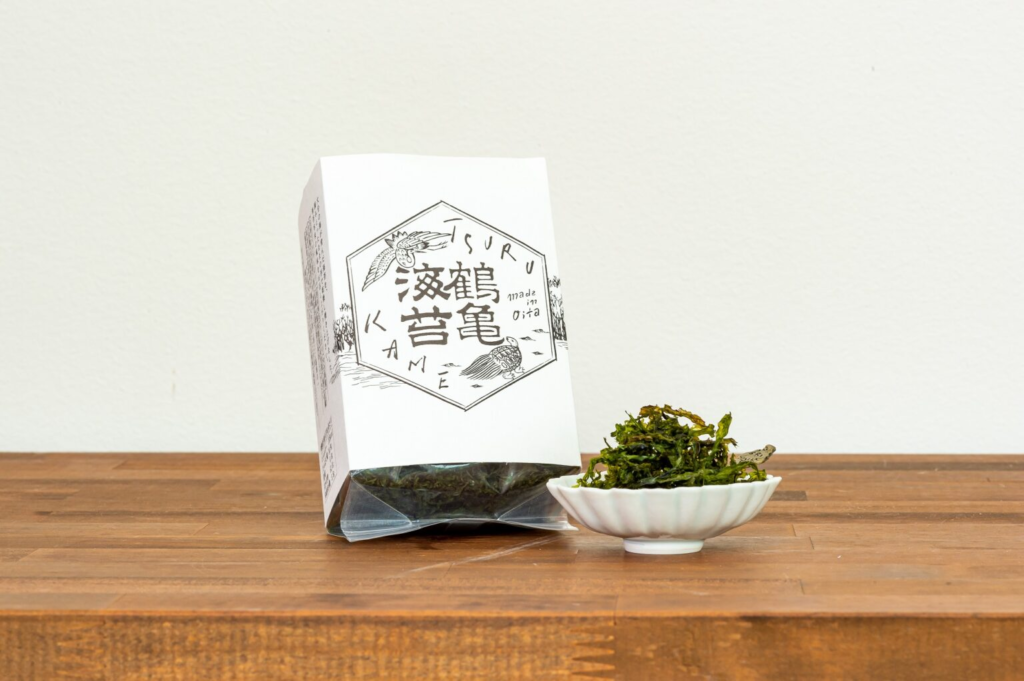
For over 70 years, Tsuru Kame Foods, headquartered in Oita City, has been engaged in the processing and sales of seaweed from Oita Prefecture. The company traces its roots back to its predecessor, “Tsuru Kame Nori,” founded by the grandfather of the current third-generation president, Koji Yukino. Since its inception, the company has remained committed to using seaweed from Oita Prefecture and has continuously refined its flavor. Since seaweed harvests are heavily dependent on natural conditions, the company once considered sourcing from other regions. However, they prioritized the principle of “producing products where the faces of the producers are visible,” and their commitment to using Oita-produced seaweed remains unwavering to this day. One of the company’s signature products is not the typical flat sheet of seaweed commonly seen, but rather “picked seaweed,” which is flaked like “aosa” seaweed.

Also known as “bara-hiki nori,” this seaweed has a fluffy appearance, but when you put it in your mouth, it has a firm texture and a rich seaweed flavor. It can be added to soups or rice dishes such as tamagokake gohan (rice with raw egg) to transform everyday dishes into something special. In restaurants in Oita City, it is also served as a condiment at eel restaurants and soba noodle shops.
“Picked Seaweed,” created to capture the true flavor of seaweed.

The inspiration for “Tsumi Nori” originated over 30 years ago. During the 1950s and 1960s, the mechanization of nori production advanced, leading to increased production and a surplus in supply. As a result, unsold nori was being incinerated. Against this backdrop, the idea emerged to not only address food waste but also to create a new form and flavor of nori that differed from traditional sheet-shaped nori. This led to the development of “Tsumi Nori.” While traditional sheet-shaped seaweed is said to have originated in the late Edo period using the techniques of Asakusa washi paper, “Picked Seaweed” draws inspiration from an older method from the mid-Edo period. This method involves harvesting fresh seaweed from the sea, drying it in the sun on rocks, and then roasting it over a brazier. “This is the perfect way to enjoy seaweed that feels both nostalgic and new,” thought Tsuru Kame Foods. After years of trial and error and product updates, it took approximately 30 years to finally achieve the desired taste. The traditional method used to make this ‘old yet new’ seaweed involves many steps that cannot be done by machine, with most of the process done by hand. Though time-consuming and labor-intensive, the flavor and texture that emerge are truly unique. Additionally, it not only allows you to enjoy the rich, authentic taste of seaweed but also provides the nutritional benefits of high-quality protein and folate, among other nutrients naturally found in seaweed.
Pursuing the ultimate seaweed, returning to the roots.

Since its founding, Tsuru Kame Foods has been committed to delivering delicious food to the table. Several years ago, the company returned to its roots and began sourcing seaweed from Matsumoto Yasuhide, a fisherman in Usa City who cultivates seaweed, in pursuit of the ultimate flavor inherent in seaweed. Even though they had been using seaweed from Usa and Nakatsu, after collecting and comparing data and taste, they noticed that the seaweed harvested by Mr. Matsumoto stood out. “Normally, diatoms attach to freshly harvested seaweed, but Mr. Matsumoto’s seaweed is carefully maintained, so there are very few diatoms. That’s why we started sourcing only the seaweed he harvests,” explains Yukino. Additionally, while Tsuru-Kame Foods had previously frozen the harvested seaweed before use, switching to using it fresh significantly improved the flavor and taste, giving them absolute confidence in the quality.
The “Oita seaweed” born from fishing passed down by young fishermen
Following in his father’s footsteps, Matsumoto became a seaweed fisherman at a young age, having grown up in a family that operated a seaweed farm. From a young age, he spent most of his time working alongside his parents in their factory. In his 20s, he worked outside the prefecture for a while, but returned home due to his parents’ poor health. Despite understanding that fishing was a tough job, he gradually came to appreciate it as a good profession and decided to dedicate his life to it. The farming method Matsumoto uses is called “pillar-style.” This method involves fishermen driving stakes into the sea and stretching seaweed nets between them, mimicking the natural growth of seaweed. By utilizing the tides, the seaweed absorbs nutrients from the water during high tide and is exposed to sunlight during low tide, making it resistant to disease and concentrating its flavor. “We must constantly manage the balance to ensure the seaweed doesn’t dry out too much or become too saturated with water,” says Matsumoto, who repeats this process daily, adjusting the height of the nets while monitoring the tides, and then travels four hours round-trip to deliver the freshly harvested seaweed to Tsuru-Kame Foods in Oita City.
Continuously moving forward, preserving Oita’s seaweed culture.

Such harsh, physically demanding work in the seaweed fishing industry is indeed a significant issue for the aging fishing community, but it is not limited to seaweed farming alone, according to Yukino. “In agriculture, fishing, and small-scale production areas, aging and succession issues are unavoidable challenges. That’s why we are committed to promoting the charm and deliciousness of Oita’s seaweed, raising its value, and hoping that this will contribute to solving these issues.” Creating high-quality products becomes an attraction that attracts successors. To transform the declining seaweed farming industry, it is essential to continue evolving and innovating.

While it is undeniable that sales declined during the COVID-19 pandemic that began in 2020, Tsuru Kame Foods turned adversity into opportunity by entering its signature product, “Tsuru Kame Nori Picking Seaweed,” into various contests. As a result, in 2022, it won the Excellence Award in the “Cooking Kingdom 100 Selection” and the Runner-Up Grand Prize in the “Eat Japan Delicious Award 2023.” The national-level awards have changed the speed at which customers accept their products. “While it is important to convey our dedication to our craft, winning these awards has significantly accelerated the pace at which customers take an interest in our products.” Though they have confidence in the taste cultivated over their long history, the awards have provided them with a tool to communicate their value to the world, thereby increasing their recognition.
“When Oita’s seaweed farming was at its peak, our history began. That’s why we feel a sense of mission to preserve this culture and continue Oita’s seaweed tradition as a company, and we want to incorporate that into our future product development,” says Yukino.
Born and raised in Oita, Tsuru Kame Foods’ seaweed, which is deeply rooted in the local flavor, is now spreading to dining tables across the country.




